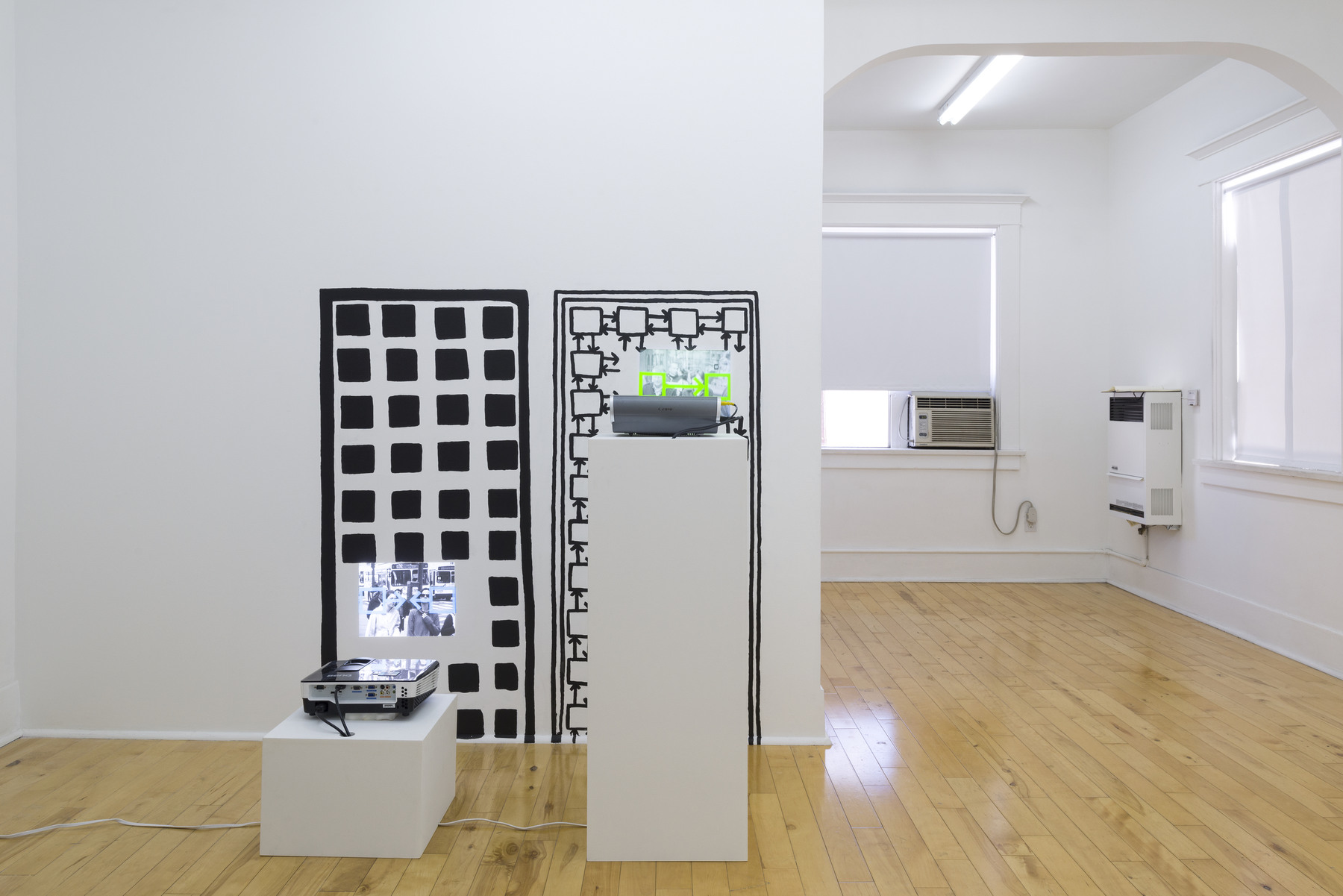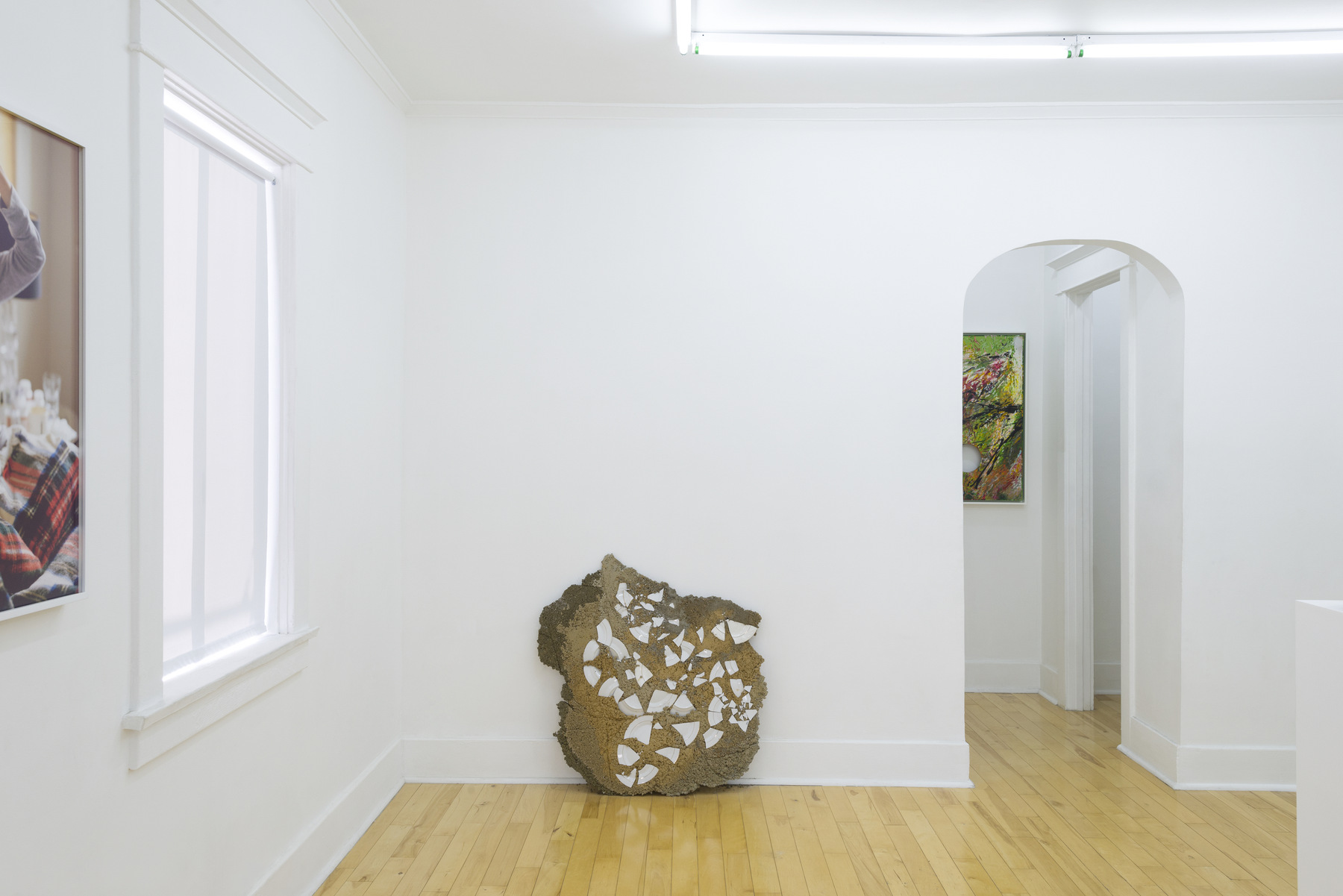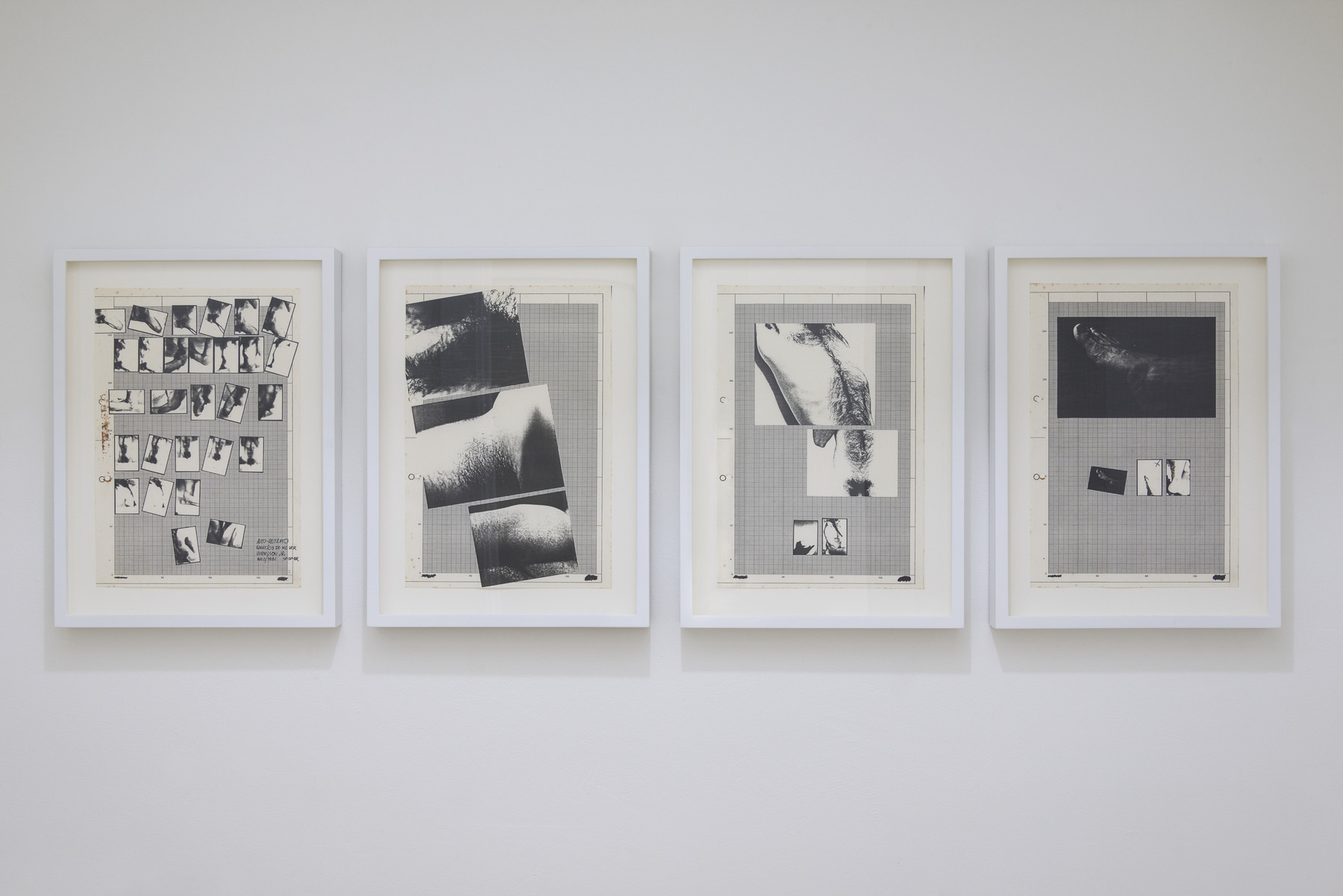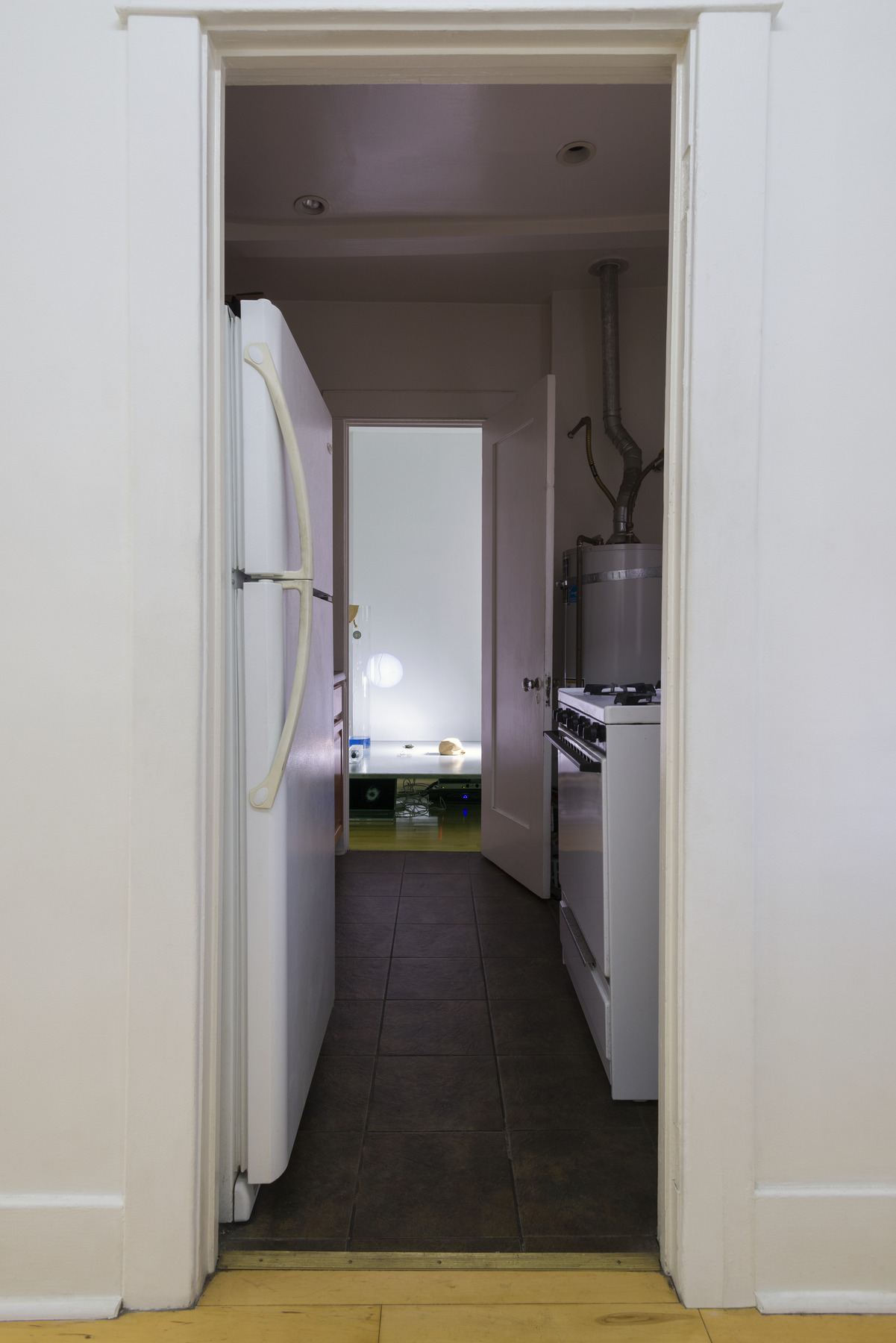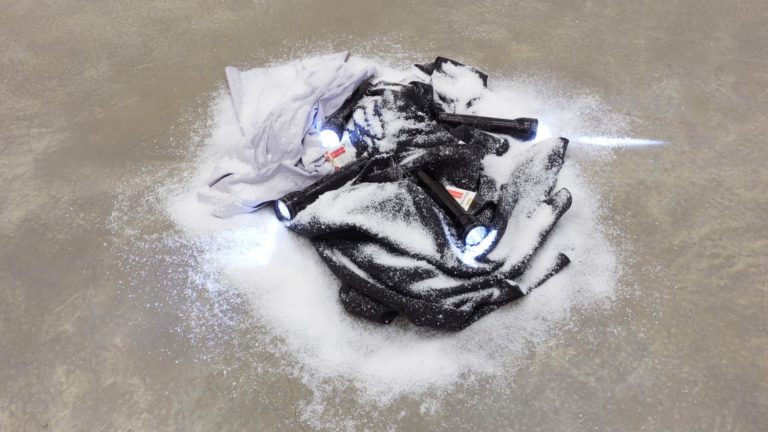Artists: Buck Ellison, Elif Erkan, Jules Gimbrone, Tom Holmes, Hudinilson Jr., Stephen Willats
Exhibition title: The Social Register
Venue: Park View, Los Angeles, US
Date: September 19 – November 7, 2015
Photography: images copyright and courtesy of the artist and Park View, Los Angeles
Park View is pleased to open the fall 2015 season with The Social Register, an intergenerational group exhibition with Buck Ellison, Elif Erkan, Jules Gimbrone, Tom Holmes, Hudinilson Jr., and Stephen Willats. An opening reception will be held Saturday, September 19 from 3-6pm, and the exhibition will run through November 7 at 836 South Park View Street in Los Angeles.
The title of the exhibition comes from the name of the publication the Social Register, released since the late 19th century as a directory for elite American families, detailing names, permanent and summer addresses, lineages and kinships, country club and university affiliations, and the names given to estates and yachts. “Founded in 1886, the Social Register is among America’s oldest and most distinguished private associations,” proclaims the Social Register’s website. “These were the names of the preferred social contacts of prominent families, alphabetically arranged.”
Laid out as an objective and comprehensive compilation of status symbols able to promote new social connections, the annual catalog inspired the exhibition’s collection of works, which draw from traces of signs and operations that structure how people organize and interact in the material world. The works present snapshots of how these symbols and modes generate one’s self-understanding by jettisoning the individual into kinetic push-and-pull situations, where one affiliates with or segregates from others, becoming apart of or apart from the social crowd.
The exhibition spans all media to include photography, sculpture, painting, video, sound, and works on paper. Functioning as both documents and aesthetic objects, the works also relate to how these symbols and modes themselves metaphorically live and die, operating as enlivened social actors themselves within the container of the artwork.
Although they are produced from a seemingly clinical perspective, the works’ gestures imbue feelings of anger, depression, and illness, but also exuberance, joy, and curiosity. The artists connect these personal feelings and their self-representational qualities back to larger frameworks of social understanding, using formal and compositional moves that establish feedback loops between social systems and the work. The incorporation of outside conditions establishes critical moments of identification between the artist and artwork, and artwork and audience, denying the possibility of separating off as either detached observer or neutral participant.
This type of embedded self-examination in turn challenges aesthetic representation itself, as the works continue to live, operate, and change, remaining inextricable from the atmospheres of their respective physical, political, and social networks of production.
Buck Ellison’s (b. 1987 in San Francisco, USA; lives and works in Los Angeles) most recent photographs are inspired by a certain Southern Californian culture, defined by a heightened focus on wellness and suburban comfort. Beautiful, strange, and engrossing, the artist’s images portray markers of affluence that communicate as much about lifestyle as they do about the state of image-making today. Their seeming casualness is belied by signs of self-conscious construction, referring back to the photograph as a container while gesturing outside to the present moment, in which languages of advertising photography have naturalized into the making of everyday social documentary, rendering the two categories indistinguishable. Health consciousness as leisure pursuit assumes a discomforting tone in Thyroid Problem (2015), Ellison’s contribution to the exhibition, which depicts a bedridden woman in shallow focus at sunrise, an image that could be either a personal picture of decline or an editorial for a new prescription medication.
The works of Elif Erkan (b. 1985 in Ankara, Turkey; lives and works in Los Angeles) act like displays or containers for memories that are as unique and singular to the individual as they are demonstrative of a whole social body. She has tasked her most recent sculptures, paintings, and installations with representing personal crisis, couched between the experience of one’s own inner life and portrayals of the private meltdown in mass media. Readymade forms like porcelain plates and found landscape paintings are transformed by seemingly aggressive acts by the artist, who composes expressively and spontaneously via repetition, accumulation, and removal. Along the way the irrational behavior of Erkan’s materials, and their specific responses to the physical and cultural conditions of each new context, seem to question how our emotional lives can be memorialized, and moreover how a sculpture can function as a document of an action that reflects its surroundings. Erkan’s new in situ sculpture in concrete, beige pigments, and porcelain plates acts as a container to a performative act of seeming violence and distress, produced by breaking plates repeatedly, suspending the resulting shards and fragments in pours of concrete, and hoisting it from the ground to lean against the wall of the gallery.
The work of Jules Gimbrone (b. 1982 Pittsburgh, USA; lives and works in Los Angeles) also asks how performance is captured and transmitted, and in particular the role an audience plays in that process. Combining sound and objects into immersive aural and haptic environments, Gimbrone re-engineers sites of past performances with audio transduction equipment, producing installations that transform the sounds of performance into a physical experience for the audience. Gimbrone’s new work Traps and Transmutations (2015) is comprised of resonance frequency recordings of the gallery bedroom’s architecture, which are played with transducers through a fictional set that includes a built stage, a glass vase, and microphones. The audience’s entrance into the room produces completely new, infinitely mutable situations, in which physical presence and participation alters the sound frequency of the recordings.
The works of Tom Holmes (b. Ozona, Texas; lives and works in Liberty, Tennessee) memorialize popular commercial icons via a language of funerary objects (arrangements, shrouds, gravestones, and reliquaries). The artist has become known for balancing minimalist aesthetics with frenzied abstraction to reconfigure graphic designs of mass-market products, emblems and figures – Cheetos, Boo Berry cereal, Monster energy drinks, the Confederate flag, and Dennis Rodman, among others. Barely visible beneath the obsessively applied strokes of paint building off of the logo’s reds and greens, Mountain Dew features as the central element of the artist’s contribution to the exhibition, Untitled arrangement. Bleeding into a palette of the Black Power movement, and cutting across the panel with blooms of paint, Holmes’ composition becomes but a memory of a visible icon whose outline, abstracted metaphorically within this bouquet of color and black, sinks beneath the noise of its dynamic representation.
The works of the late artist Hudinilson Jr. (b. 1957 in São Paulo, Brazil, d. 2013 in São Paulo) provide a historical context for the other artists in the show, who each have turned towards private worlds and references in order to better understand and grapple with the social outside and its potential to be represented. Within a climate of military repression in Brazil in the late 1970s, Hudinilson Jr. turned towards his own body, utilizing a simple and readily available technology, the Xerox machine, to create empirical self-portraits in an effort to explore his queer identity against this political backdrop. His oeuvre spans photographs, found objects, and collages of medical imagery, gay pornography and pop cultural detritus. Hudinilson Jr.’s intensely private works displayed in the show, executed in a performative one-to-one encounter between man and machine, highlight his overall practice, characterized by an obsessive attention to the male body. The work, from 1981, pictures a dynamic arrangement of Xerox photocopies that have been re-arranged on graph paper and re-copied into a 4-part polyptych, resembling the visual drama of a Romantic musical score filled with feet, legs, arms, buttocks, and genitalia. Thrusting the concept of the political gesture to its extreme by renewing it repeatedly through representations of his own flesh, Hudinilson Jr. sets up an allegory of sexual encounter that is in the end but a mirroring of the self.
The work of the pioneering video artist Stephen Willats (b. 1943 in London, UK; lives and works in London) conceptually grounds the show with an installation that includes A Progression of Signs from 2011 projected within a wall drawing of Willats’ signature “homeostats” or grids. In the words of the artist: “It is both an intention and an outcome that the development of my art practice encompasses the polemics and issues of our contemporary culture and society as a means of consciously examining the function and meaning of art in society. This necessarily takes it beyond the norms and conventions of an object-based art world, rather seeing it as a function of my work to transform peoples’ perceptions of a deterministic culture of objects and monuments, into the possibilities inherent in the community between people, the richness of its complexity and self-organization. The artwork has a dynamic, interactive social function.” This will be the first time Stephen Willats exhibits in Los Angeles.
Buck Ellison, Thyroid Problem, 2015
Stephen Willats, Cybernetic Still Life No. 2, 2009
Elif Erkan, Grounded, 2015
Elif Erkan, Grounded, 2015 (detail)
Tom Holmes, untitled Arrangement, 2015
Hudinilson Jr., Auto-retrato (Exercicio de Me Ver), 1981
Jules Gimbrone, Traps and Transmutations, 2015
Jules Gimbrone, Traps and Transmutations, 2015 (detail)





